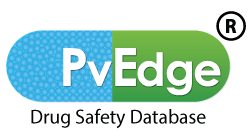Need for this
In the domain of pharmacovigilance, handling and consuming vast amounts of literature is essential in pharmacovigilance. PvEdge's Literature Access Module (LAM) has proven invaluable in retrieving relevant articles from a variety of databases, including MEDLINE, Embase, Excerpta Medica, PubMed etc. However, sorting through these articles, selecting the relevant ones, and processing them appropriately still took a lot of human labor. This manual process required a lot of time, and work, and was prone to human mistakes. To overcome these obstacles, a more automated and effective way to improve productivity and optimize this workflow was desperately needed
How it Benefits
Text Data Mining (TDM) is designed to overcome the limitations of the existing LAM feature by introducing a higher level of automation and intelligence. The benefits of TDM include:
Reduced Manual Effort
Enhanced Efficiency
Scalability
User-Friendly Interface
Improved Accuracy
How We Are Using TDM in Existing Products
TDM has been integrated into the PvEdge platform as an enhancement to the existing LAM feature. The workflow with TDM includes:
- Automated Data Fetching: TDM fetches articles from PubMed, Embase, MEDLINE, and other platforms, just like LAM, but it goes further by automating the entire data extraction process.
- Content Analysis: Using NLP and data mining techniques, TDM reads the content of fetched articles, identifying those relevant to pharmacovigilance.
- Document Processing: TDM automates various document processing tasks, such as FTA details fetch, multi-patient identification, duplicate search mechanisms, ICSR & AOI segregation, and R2 XML generation.
- Verification and Reporting: The system provides extracted data highlights for verification and generates reconciliation reports, ensuring data accuracy and integrity.
Result of Implementation of TDM
The implementation of TDM in PvEdge has yielded significant improvements:

Time Savings

Increased Productivity

Higher Accuracy

